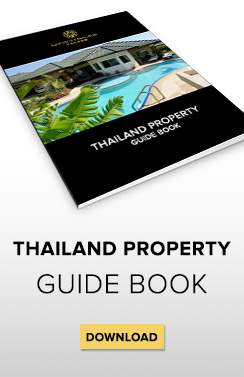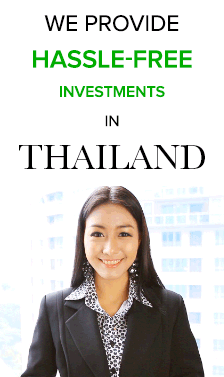NEW RESEARCH REPORT SHOWS GROWTH IN THAILAND’S MEDICAL TOURISM SECTOR

Above: The growing medical tourism market creates business opportunities for medical facilities built by international investors.
A short research report from C9 Hotelworks Market Research called, ‘Phuket medical tourism market’ suggests that Australia and China are the two most significant international sources of business for the island’s growing medical tourism sector.
48% of medical tourists have cosmetic surgery, 34% have anti ageing treatment and 15% have dental treatment.
25% come from China, with most seeking anti ageing treatment. 55% are from Australia and 70% of Australians have cosmetic surgery. Most cosmetic surgery is for breast implants, liposuction and face/body contouring.

Above: 15% medical tourists have dental treatment.
Two out of three patients book through international medical tourism agencies based in overseas locations, mostly in Australia.
Phuket International Hospital is building a new wing just for medical tourists, while other wellness and cosmetic treatment facilities are being built. More international hospital chains are expected to set up in Phuket.
Hospitals and clinics are looking to develop beyond cosmetic surgery to offer a wider range of treatment.

Above: Phuket’s reputation as a quality medical destination is growing.
Bill Barnett of C9 Hotelworks says, “Phuket’s reputation as a quality medical destination is growing. Hospitals and clinics are working with medical tourism agencies to provide inclusive packages combining wellness and holidays at competitive prices points. The growing market creates business opportunities for medical facilities built by international investors.”

Above: Hospitals and clinics are working with medical tourism agencies to provide inclusive packages combining wellness and holidays at competitive prices points.
China-ASEAN look to next 25 years of partnership
In the Lao capital of Vientiane, leaders of the Association of Southeast Asian Nations or ASEAN, have met with their East Asian counterparts.
Chinese Premier Li Keqiang (4th L), Laotian Prime Minister Thongloun Sisoulith (5th L) and Singaporean Prime Minister Lee Hsien Loong (4th R) cut a commemorative cake as they attend a ceremony to commemorate the 25th anniversary of the establishment of China-ASEAN dialogue relations, in Vientiane, Laos, Sept. 7, 2016.
They are trying to hammer out critical issues affecting security. They also discussed advancing a critical free trade deal. But it was a particularly special day for China and ASEAN, as the two parties marked 25 years of dialogue partnership that has seen trust and improved trade growth. Rian Maelzer reports from Vientiane, Laos.
Both host Laos’ prime minister and Chinese premier Li Keqiang expressed the belief those those ties would broaden and deepen in the years ahead.
Li said, “In the future, the relationship between China and ASEAN has great prospects. China is still an important partner for ASEAN in maintaining peace and stability in the region, and in encouraging the regional integration, as well as a global role for the region.” Leaders of China, South Korea and Japan also sat down with ASEAN leaders. And despite tensions between the parties over several issues, they all remain on side for speedily concluding a Regional Comprehensive Economic Partnership or R-CEP with their ASEAN neighbours.
Source:CCTV NEWS
Thai Exports Climb First Time in Five Months on Boost From Cars
Thailand exports rose for the first time in five months in August following a surge in vehicle shipments, according to data from the Ministry of Commerce.
Key Points
- Exports gained 6.5 percent in August from a year earlier, compared to a median estimate of a 1 percent contraction in a Bloomberg survey of 14 economists
- Automobiles, which make up 12 percent of total exports, climbed 40.4 percent in August from a year earlier
- Industrial exports rose 9 percent, led by auto, steel and semiconductor sectors
- Thailand posted a trade surplus of $2.13 billion in August, compared with $1.2 billion in the previous month
Big Picture
Thailand is Southeast Asia’s vehicle production hub, producing about 2 million automobiles in the past 12 months, representing about half the regional total, according to research from Bloomberg Intelligence. That’s helping to support an economy that’s been hit by sliding global demand and weak consumer sentiment. Part of the surge in vehicle exports last month was due to $370 million of shipments that the customs department failed to book in July because of technical issues, Deputy Commerce Minister Suvit Maesincee.
Other Details
- Ministry of Commerce sees exports likely posting zero expansion to a contraction of 1 percent
- Exports were up 14.9 percent to the U.S., 11.8 percent to the European Union, 5.7 percent to Japan and 4.4 percent to Japan
- Deputy director general for Ministry of Commerce’s trade policy and strategy office told reporters the “export situation is expected to improve for the rest of this year as exports of oil-related products and commodity products are likely to get better in line with recovering oil prices.”
Source:American Journal of Transportation
Thailand and China agree on 179 billion baht cost for rail project’s first phase
China and Thailand agreed on Wednesday that the first phase of a planned high-speed railway project will cost THB179 billion, Thailand’s transport minister said, with both countries calling for closer ties following rocky negotiations.
The 873 kilometer (542 miles) rail line will link Thailand’s border with Laos to the ports and industrial zones in Thailand’s east.
Beijing has ambitious railway plans to connect the southwestern Chinese city of Kunming to Thailand, through Laos, and Thailand wants to modernize its aging rail network.
Earlier this year China put the project cost at THB560 billion, which Thailand said was too high.
Agreement over the project’s framework comes after months of sometimes tense negotiations, officials said.
“This project will cost THB179 billion. This is what we agreed upon,” Thai Transport Minister Arkhom Termpittayapaisith told reporters after a three-day meeting between China and Thailand.
Arkhom said Thailand will bear full construction costs, while China will provide funds for technical systems.
The first phase will focus on a 250 kilometer (155 miles) track from Bangkok to the northeastern Thai province of Nakhon Ratchasima, with construction starting in December.
“Both countries want to begin this project by the end of the year and there is limited time remaining,” said Wang Xiaotao, vice chairman of China’s National Development and Reform Commission, who was present at Wednesday’s talks in Bangkok.
Thailand’s junta has targeted infrastructure spending as a long-term fix to help boost the economy in light of weak exports and consumer confidence.
Thailand has moved closer to China and away from its traditional ally, the United States, following a 2014 coup by the Thai army, through an increase in diplomatic visits and joint Thai-China military exercises.
But disagreements over details of the rail project, such as the currency of payment, threatened future negotiations. “We will have to work through any disagreements or misunderstandings,” Arkhom said.
Source: Coconuts Bangkok
Bangkok Takes Title in 2016 Mastercard Global Destinations Cities Index
Bangkok is the top-ranked destination city by international overnight visitor arrivals according to the annual Mastercard Global Destinations Cities Index released today.
The Index provides more than a ranking of the 132 most visited cities around the world. It projects visitor volume and spend estimates for the 2016 calendar year, while delivering a deeper understanding of how people travel and spend around the world. As cross-border travel and spending continue to grow at a faster pace than the world GDP, the world’s cities continue to be engines of broader economic growth.
According to the study, Bangkok is projected to receive 21.47 million international overnight visitors in 2016, just ahead of second-ranked London. Forecasted international overnight visitors to the rest of the top 10 cities include:
• London – 19.88 million visitors
• Kuala Lumpur – 12.02 million visitors
• Paris – 18.03 million visitors
• Istanbul – 11.95 million visitors
• Dubai – 15.27 million visitors
• Tokyo – 11.70 million visitors
• New York – 12.75 million visitors
• Seoul – 10.20 million visitors
• Singapore – 12.11 million visitors
The biggest surprise in this year’s Index is Dubai’s jump to the top rank based on international visitor spending of US$31.3 billion, far exceeding the second ranked London estimated at US$19.8 billion.
“The way people travel and spend across borders indicates just how interconnected and important the world’s cities are,” said Ann Cairns, President of International Markets, Mastercard. “As the planning and experience of the trip become increasingly important, Mastercard is bringing all these pieces together seamlessly through innovation and connections.”
New Insights into Purpose of Travel and Local Spend
For the first time, the Index explores whether visitors travel for business or leisure as well as insights into how international visitors spend, including dining, lodging and shopping. The 2016 Index shows that among the top 20 cities, more people travel internationally for leisure, except to Shanghai. Visitors to the top 20 overwhelmingly spent more while shopping, as opposed to dining, except in Europe, where meals captured greater share of spend in Amsterdam, Barcelona, Istanbul, Milan, Paris, Prague and Vienna.
Identifying Regional Trends
The Index provides insight into top destination cities in each region, including:
- Asia Pacific – The region dominates both the global top 10 (five cities) and Top 10 fastest growing destination cities (seven cities).
- Europe – London, ranked second globally and first in the region, is the top feeder city in terms of visitor and spending volume for all other cities that round out the top European destinations: Paris, Istanbul, Barcelona and Amsterdam.
- Latin America – Lima is both the top destination and fastest growing city in the region, with 4.03 million visitors (ranked 32ndglobally) and a growth rate of 9.9 percent (ranked 15th globally). However, the rankings are very different in terms of overnight visitor spend; Punta Cana leads the region with US$2.95 billion followed by Mexico City (US$2.27 billion).
- Middle East and Africa – Dubai is the top ranked destination city in the region (ranked fourth globally), while Abu Dhabi is the fastest growing in the region with a growth rate of 19.81 percent. This marks the United Arab Emirates as both the most visited and fastest growing country in the region for the second year in a row.
- North America – New York, ranked fifth globally, is the top destination city in the region. It significantly surpasses the rest of the region in overnight visitor spend at US$18.25 billion. Nearly 90 percent of New York’s international visitors are from outside North America, led by London, Paris, Sao Paulo, Toronto and Beijing.
Mastercard understands the significant role that cities play as centers of commerce, reflected in efforts to deliver technologies that provide greater efficiencies and convenience for governments and people. One example is the broad adoption of contactless payments by transit systems like London and Chicago. The insights from this report can also help airlines, hotels and other merchants create smarter, more relevant and customized experiences for their customers.
Source:Business Wire









